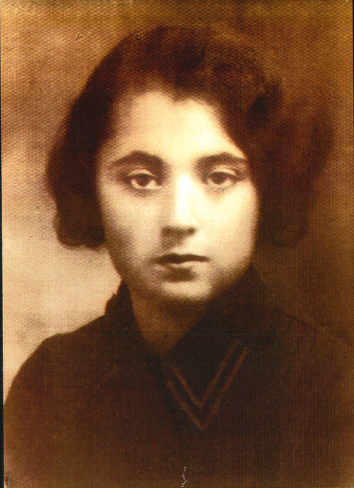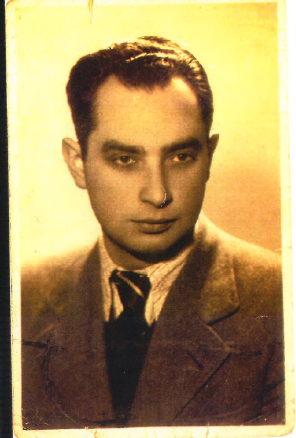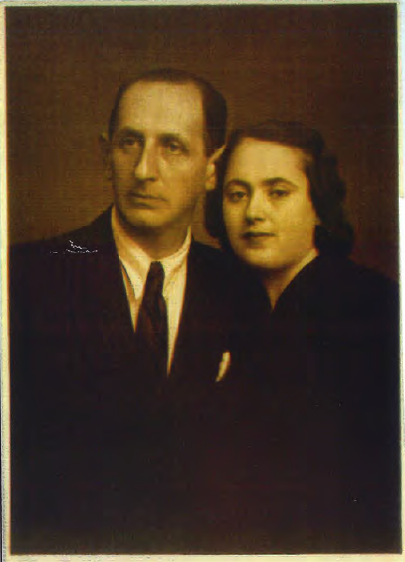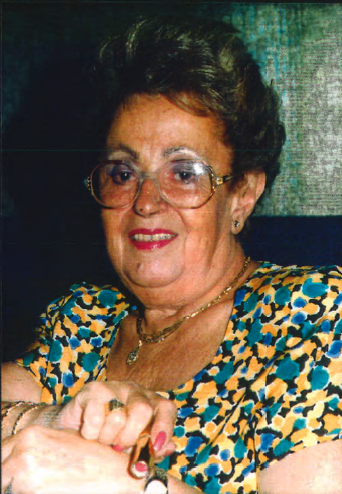- Pulished by
-
JDC at
-
September 05, 2022
On the 29th September 1947 the SS Sagittaire docked in Sydney Harbour. On board were over 200 Jewish refugees. The voyage was organised by the JDC who made it possible for thousands of survivors to begin in a new life in a land of peace. One of the passengers on board the Sagittaire who a young women called Regina Neustein, this is her story.
The day Germany invaded Poland the country was home to approximately 3,225,000 Jews. Just six years later, on May 8, 1945, when Germany surrendered, 3 million had been killed. Only 225,000 remained. Regina Neustein was one of those survivors. The odds were against survival. To be caught meant almost certain death. Regina Neustein was not caught, and against all odds, she managed to survive, to live to tell her tale.
Sydney, Australia is thousands of kilometres from the little town of Zloczow, Poland, where Regina Neustein grew up. For 75 years Sydney has been her home, but not a day goes by without her recalling her childhood in Europe -the happiness and the sadness. Regina has survived a devastating war in Europe, an arduous ocean voyage to Australia, and years of trying to make ends meet and raise a child in a foreign land. At the age of 77, she has suffered many hardships, but she now lives in comfort in Rose Bay.
Born in 1917, Regina or Gina, as she was called, grew up in the peaceful town of Zloczow, in the mountains of southern Poland. Zloczow was an unusual town. Of a population of 17,000, there were 12,000 Jews. While Jews all over Poland were estranged from their neighbouring Christians, the Jews and Christians of Zloczow coexisted happily, and Regina never felt even the most subtle twinge of anti-Semitism.

Her parents, Bertha and Moses Rosen, were wealthy, and Regina had a comfortable upbringing. Her father owned a large department store and was the president of the leading Zionist organisation in Zloczow. Regina had a brother and a sister, Avraham and Klara.
Despite all this happiness, there was much sadness in Gina’s childhood too. In 1929, her mother, Bertha Rosen, died tragically at the age of 39, when Gina was just 11 years old. For a year the whole family wore black, and Gina sorely missed her mother. Yet life found some normality. Five years passed without too much incident, until in 1934, tragedy struck again. Gina’s father, Moses Rosen, passed away aged 49. All his life Moses had suffered from asthma, which in the end was impossible to control. He died of an asthma attack.
Throughout Gina’s childhood the rise of Adolf Hitler loomed like a dark cloud. In 1933, the year before Moses Rosen’s death, Hitler became Chancellor of Germany. The impact of his power was yet to reach the little town of Zloczow.
The family continued to profit from the huge shop, which had two levels, and sold many goods, including a wide range of fabrics, rugs, linoleum, curtains, sheets and tablecloths.
Having finished school, Gina went to university in Lvov to study law. After finishing her first semester, she decided that law bored her, and spent her time learning Hebrew instead. During this period of her life, some university friends introduced Gina to a young man called Oskar Reiner, who was working in Zloczow. They began to see each other, and eventually, they fell in love.

The War Years 1939-1945
On 1 September, 1939, the German army marched into Poland, a land where Jews had dwelt in relative peace for over 800 years. Two days later, World War II was declared. Now in a matter of days, that peace was shattered.
Zloczow fell into the hands of the Russians. The Rosen shop, closed by the Germans soon after their invasion, was reopened by the Russians, who ordered the Poles to work for them.
At that time, the Rosen family was extremely lucky· to be living in the part of Poland annexed to Russia. While they suffered some problems and cruelty under the Russians, it did not compare to the brutality wrought on the Jews of western Poland by the Germans.
Oskar decided to join his parents in Stryj, Gina joined him and in March, 1940, they were married and began living with Oskar’s parents, Maximillian and Adele Reiner.
Month by month, Hitler’s power was growing. In 1941 he turned his attention to defeating the Soviet Union. Three army groups comprising almost 3 million men attacked the 3,200 kilometre-long front from Leningrad in the north, and Moscow in the centre, to the Ukraine in the south.
When the German army occupied the eastern part of Poland once again, the Jews fell back into the hands of the Nazis. Pogroms equivalent to those of Kristallnacht took place throughout eastern Poland and Ukraine. Jews throughout the region were attacked and murdered, synagogues were burnt to the ground, windows were smashed and possessions looted. That night of terror was named “Petluranacht”, after a Ukrainian “hero” who had murdered hundreds of Jews during the 1918 pogroms.
The Jews of Stryj were moved into a ghetto. Newly married, Gina and Oskar moved into an apartment in the ghetto together with Mr and Mrs Reiner senior and two other families. All four Reiners shared one room.
One day Oskar was picked up off the street while he was on his way to work. He was arrested as part of the first action and forced to join a group of men who were being held in the city gaol. Gina was desperate. Using some connections, she was able to bribe a Polish doctor to go in and smuggle Oskar out. However, It seems that Oskar, huddled amidst all the men in the crowded gaol, heard his name being called out, but did not want to draw attention to himself for fear of death or torture, and did not respond. When Gina heard that he had not answered, she was devastated, but there was nothing more she could do. A few days later she learned that all the prisoners had been marched into a nearby forest and shot.
While living in the ghetto in Stryj, Gina managed to find work in a German shop run by a compassionate Polish woman, Helen Nahirna. Helen was Gina’s saviour. Throughout the German occupation and persecution of Jews, Helen did her upmost to protect Gina.
Every day Gina would walk through the ghetto gates and into the town, to the shop. This was possible because the ghetto was not yet locked. The shop was a means of selling second hand goods to the Germans and the Poles; it was similar to a pawn shop. It was therefore possible for Gina to bring in valuables and sell them for money.

Having money was a very important part of ghetto life. Money bought food and often meant the difference between life and death. There were people starving by the thousands in the crowded ghetto. In the shop, Gina sold all her beautiful wedding presents. Meanwhile, life for the Jews was becoming increasingly difficult.
While walking in the streets of Stryj, she saw Hasidic men having their beards and sidelocks sliced off, before they were shot. Whenever a Pole, Ukrainian or a German was about to pass them on the footpath, Jews had to step off the footpath into the gutter. Through Helen Nahirna, Gina contacted a Jewish engineer by the name of Jakob Rappaport.
Rappaport had a wife and child, who had both escaped to Palestine before the war. Rapport’s Ukrainian neighbour, a man called Ivan Kuzyk had agreed to build a bunker in the forest. The bunker was to hold Rappaport, some friends, his two brothers and their wives and children.
Building the bunker placed his family in great danger. Nevertheless, under cover of darkness Kuzyk worked quickly to complete the bunker. When it was finished, it was just deep enough to allow someone to stand. It was divided into 13 cubicles, one for each person. Kuzyk lined the ground with straw, and supplied a bucket and a curtain for a “discreet” bathroom area. A month before her scheduled escape, Gina’s parents-in-law were rounded up in an aktion while she was at work. Until then she had been looking after the elderly couple. Now she was alone.
Gina had lived in the ghetto for two years. She had seen many aktions, and many deaths from hunger and disease. She had been part of a crowd of Jews who were locked in a synagogue which the Germans claimed they were going to set alight. Miraculously and inexplicably, they were freed. Gina had seen the exhaustion the labour camps caused, she had seen starving children, she had seen people menaced and killed, she felt she had seen hell.
One day in 1943, Gina walked out of the ghetto, but instead of going to the shop, she walked towards the outskirts of town, taking off her Star of David as she walked. She was met by a peasant, and they proceeded to walk into the forest. While a neighbour kept guard, Kuzyk showed Gina into the hiding spot where she would spend the rest of the war.
At this stage Gina was feeling numb, depressed and sorry to be alive. Her great love had been murdered, and she cared about nothing else.
Yet, surprisingly, even when her mind wanted to die, her body had the will to survive. Somehow her feet carried her to the bunker, and her mouth spoke to her new “roommates” and to Kuzyk. There were 1O adults in the bunker, including Gina who was 24 when she first went into hiding, and three children, aged 12, 9 and 3 years old. Gina carried only a couple of blankets and a cushion with her, but she wore as much clothing as possible. The bunker, being underground was never too cold, not even in the freezing Polish winters.
Gina, the youngest· adult, would often play with the children, helping to keep them occupied. While outwardly she displayed good spirits, inside she was in the depths of despair. She explains, “When you lose your first love, you lose everything.”
Life in the bunker was not nearly as bad as life outside. Although they were confined, and feared discovery, they were not tormented, and did not have to witness the suffering of others. Every so often the inhabitants would be given an old newspaper to read, and thus they received some filtered world news. They never knew how much of the “news” was fact and how much was propaganda. Kuzyk tried his hardest to provide them with enough food.
Every couple of days he would smuggle some bread, soup, potatoes and occasionally, some meat to them. The children were always fed, even if the others had to go without. Although they often had to miss a meal, the inhabitants of the bunker never felt the gnawing hunger known to the Jews in the ghettos, labour camps and concentration camps.
Then, in August 1944, the day of freedom came at last. The Red Army liberated Stryj, and Gina was finally able to go outside once more. The inhabitants of the bunker had to be carried out, they could barely stand up, but they were alive!
Gina was horrified to discover that Kuzyk, who had hidden and protected her for almost two years, had been found out. He was murdered by a group of Ukrainian partisans, called the Bundera soon after Stryi was liberated.
Eventually Gina and other survivors began their weary way back to their hometowns all over Poland. Gina settled in linz Austria and soon after her arrival she met David Neustein when she delivered a message to him from some mutual friends. She had known his parents in the ghetto, and a bond was formed. Even though David was 19 years older, they decided to make a new life together. On 28 August, 1946, Gina and David were married.

Both wished to put the horrors of the war behind them, and a plan was put in place to immigrate to Australia. They travelled by train to Paris where they boarded the “Sagittaire”, the vessel that would carry them towards their new live. The couple arrived in Australia on 30 September 1947, there, they began picking up the pieces of their shattered lives.
The early years in Australia were very hard. Gina knew little English, Sydney was not the cosmopolitan city it now is, and the locals were not inclined to make it easy for foreigners. At first, they stayed with David’s cousins, but then the found a flat to rent in Paddington. Their landlady, Mrs Findlay was a kindly person and a great help. On 23 July, 1948, Gina gave birt, to a son, whom they named Michael.
Between 1957 and 1972, Gina had her own business in Newtown, selling women’s clothing and shoes. David kept the books. In 1961 Michael was Barmitzvah at Cremome Synagogue. Soon afterwards the family moved to Surry Hills, which was closer to the business, and Michael attended Sydney Boys High. He went on to study architecture at the University of Sydney. When Michael was in 3rd year his parents achieved an Australian dream, after 21 years in Australia they bought their own home, a unit in Rose Bay.

It is now 75 years since Gina Neustein emigrated to Australia, and 78 years since the town of Stryj was liberated. Gina’s war time experience remained with her the rest of her life. Events as terrible as those cannot be erased. She was always grateful that her parents died before the war, and she never forgot her fist love Oskar and continued to be tormented with nightmares of him in the gaol, crying “Why didn’t you save me!” Gina lost every member of her immediate family in the Holocaust.
By recording her story, I have helped the truth to be told. This story stands as testimony to the Holocaust. It is direct evidence which invalidates the claims of those who seek to deny the genocide that took its toll of six million Jewish lives. The Jews of my generation must learn and remember the deeds of the past and, by doing so, must ensure that they are never repeated.
Get updates from The Joint & JDC
It’s the easiest way to keep up to date with all our latest news, events and fundraising activities.
© 2024 The Joint Australia | Partner of American Jewish Joint Distribution Committee, Inc

